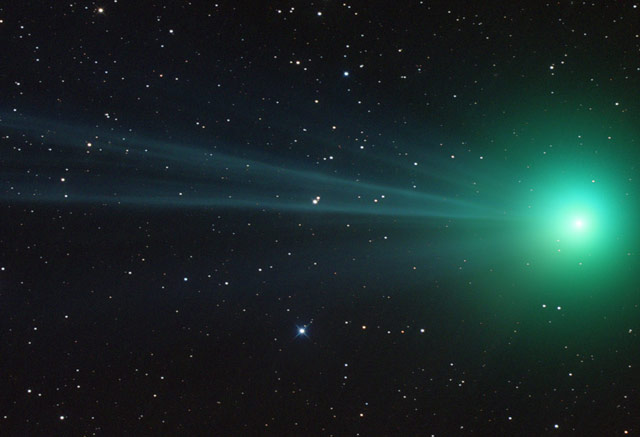Hi everybody
Here's the latest article from the Astronomy site at BellaOnline.com.
Bootes the Herdsman
This ancient constellation contains black holes as massive as a billion Suns, extrasolar planets and a meteor shower acquired from an extinct neighbor. Its brightest star is a red giant 25 times the diameter of the Sun.
http://www.bellaonline.com/articles/art19551.asp
*Skywatch*
(1) Tomorrow night is the big night for the Perseids, but if you have a clear sky and patience, you should be able to see some tonight. The Great Twitter Meteorwatch begins at 9.00 tonight British Summer Time. That's 4.00 EDT, so it will be well underway when night falls in North America. http://meteorwatch.org/
There are already plenty of Perseid sightings. I've been adding new information to the Astronomy Forum at BellaOnline.
http://forums.bellaonline.com/ubbthreads.php/topics/614905/The_Perseids_Coming_to_a_sky_n#Post614905
(2) But if you don't want to stay up late for the Perseids, there is another beautiful view after sunset. You may have already seen Venus, Mars and Saturn grouped together. On August 12 the crescent moon will join them. For the photographers amongst you, it sounds like a great photo op.
(3) Here is a wonderful photo of one of this year's Perseids.
http://spaceweather.com/meteors/perseids/images2010/10aug10/Tamas-Ladanyi1.jpg
Tamas Ladanyi (Taliandorogd, Hungary) took it on Sunday night. Do you see the bright object just above and to the right of the ruined church? That is Jupiter. Fabulous image of the Milky Way overhead.
*Anniversaries*
(1) NASA's Magellan spacecraft went into orbit around Venus twenty years ago yesterday (August 10, 1990).
The craft was named for Portuguese explorer Ferdinand Magellan, whose 16th century expedition was the first to circumnavigate the globe. Magellan was the first interplanetary probe to be launched using the Space Shuttle.
Magellan orbited Venus for more than four years. It mapped 98% of the surface using radar. Radar has a longer wavelength than visible light and penetrates clouds.
There had been many visits to Venus before then, notably the extended Soviet Venera program. But Magellan's results were the most comprehensive and had a much higher resolution. This picture was made using radar data from Magellan: http://antwrp.gsfc.nasa.gov/apod/ap100801.html
ESA's Venus Express is currently in orbit around the planet.
(2) Tomorrow August 12 is the fifth anniversary of the launch of NASA's Mars Reconnaissance Orbiter. It's still taking amazing photos of the red planet. Have a look at the latest: http://marsprogram.jpl.nasa.gov/mro/
*Education*
As promised, here is my first article aimed at helping out educators and students.
Science Fair Astronomy Projects
Attention, educators and students! Need help with astronomy ideas for a science fair? Wonder about how to do a project or investigation? Here are some useful sites with suggestions for astronomy-themed projects, as well as plenty of how-to on researching and presenting work.
http://www.bellaonline.com/articles/art27830.asp
That's all for this week. Wishing you clear skies.
Please visit astronomy.bellaonline.com for even more great content about Astronomy.
To participate in online discussions, this site has a community forum all about Astronomy located here -
http://forums.bellaonline.com/ubbthreads.php?ubb=postlist&Board=323
I hope to hear from you sometime soon, either in the forum or in response to this email message. I welcome your feedback!
Do pass this message along to family and friends who might also be interested. Remember it's free and without obligation.
astronomy Newsletter








